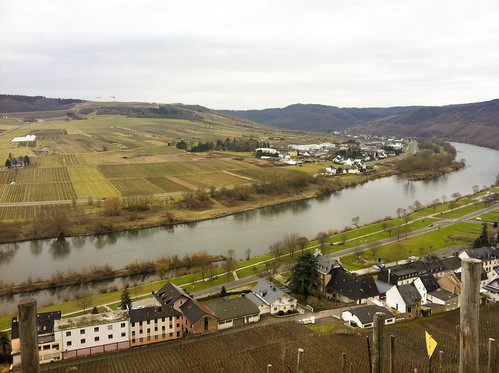09
Daily Wine News: Revolutionaries
Posted by | Posted in Wine News | Posted on 11-09-2012

Frank J. Prial (Photo: New York Times)
Chinese police found 10,000 bottles of fake Bordeaux in an empty house. Interestingly, it was not the high-end Château Lafite Rothschild, but rather the entry-level wines from the DBR collection.
Speaking of forgeries, more photos of Rudy Kurniawan’s house emerged in court filings, as revealed by Don Cornwell in the still-going strong thread on the Wine Berserkers message board.
Tom Wark takes note of Liquor Library, a new store at the Las Vegas airport: “[W]ine lovers can now feel at ease knowing that they don’t have to wait the ten minutes it takes to go from the airport to the nearest liquor store to get their hands on a good bottle of Sparkling Wine for their ride over to The Strip.”
“Helmut König’s team and the enologists of the working group of Ulrich Fischer in Neustadt have developed ‘Practicable Milestones’ in order to enable wine-makers to lower the risk of the production of biogenic amines.” What does that mean? Scientists are trying to prevent headaches!
In Businessweek, Donna Abu-Nasr has the remarkable story of two Syrian winemakers who are still making wine while their country is in the midst of a violent conflict that has killed more than 35,000 people.
In Palate Press, Remy Charest issues a spirited defense of Wine Spectator’s Top 100 Wines of the Year (and offers his own guess for #1!).
Meanwhile, in the Spectator, Matt Kramer argues that a country’s drinking culture can end up holding back the success of its wine industry.
“[The 100-point system] has homogenised the American palate, and people have relinquished their own decision-making abilities and personal preferences in favor of someone else’s.” An enlightening interview with Dustin Wilson, Wine Director of New York’s four-star Eleven Madison Park.
Wilson is one of the four sommeliers featured in the new wine documentary, “SOMM.” The film’s director, Jason Wise, was interviewed by Wine Spectator.
“The 2012 California wine grape harvest yielded generous amounts of high quality fruit, and winemakers across the state are describing this year’s vintage as ‘excellent,’ ‘outstanding’ and ‘ideal.'” The Wine Institute provides a harvest report.
At Drinkhacker, Christopher Null participates in a vertical tasting of Le Rêve by Domaine Carneros, the sparking wine house I profiled here in September.
On a sad note, “Frank J. Prial, whose Wine Talk column in The New York Times introduced many Americans to the world of wine in the 1970s, when a new passion for fine food and drink was taking hold in the country, died on Tuesday in West Orange, N.J. He was 82.” Eric Asimov penned the obituary for the Times.













